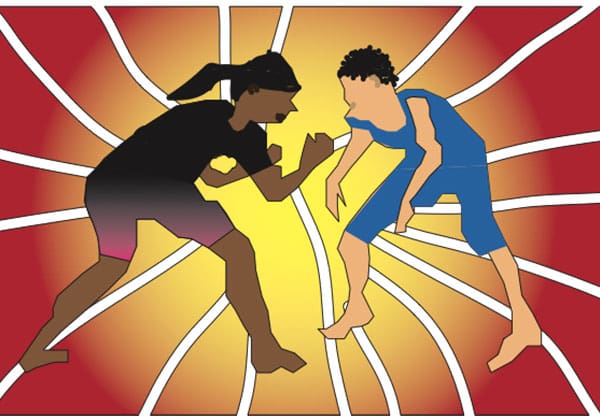As a wide eyed ten-year-old, watching wrestling on TV captivated me. Upon seeing the likes of Jeff Hardy and Rey Mysterio performing diving somersaults and swinging around the ropes, I would be very quickly inspired to turn the lounge room into my own ring, leaping from the armrests and elbow-dropping the couch cushions. There was something with magical potential being created here.
Wrestling occupies a unique position between sport and pantomime. It builds up hype and anticipation with soap operatic drama, before exploding into high-octane stunt action. It disregards the gentility of theatre, drop-kicking the fourth wall and allowing for the crowd to yell support or hurl abuse at the characters, all the while ignoring the bureaucratic trivialities of “fairness.” The fun and excitement of being embroiled in the action is what keeps fans like me mystified, and who can blame them? As an interactive form of competitive entertainment, nothing really comes close.
So, when the Australian Wrestling Federation (AWF) announced that their ‘Slamdemic’ event was taking place in Marrickville, I was quick to snap up a ticket. On arrival to the oversold venue we were hurriedly seated off to the side of the ring, with the wall blocking a good part of our view. This didn’t curb my enthusiasm in the slightest. The atmosphere reached boiling point almost immediately, as local favourite and tag-team champion Hell Yeah was taken down by the enigmatic and dishonourable Mad Maxx in a match featuring the works: jumping from the top rope, fighting outside the ring, interference from other wrestlers, and steel chair beat-downs.
As the night went on, I noticed that matches were falling into predictable tropes and patterns. The event organisers were obviously in a tough situation. They had to live up to the excitement of the WWE without the required resources. Their answer to this problem was to, very obviously, signal to the crowd who the heels (villains) were. One such example was to create a massive underdog out of the turtleneck-clad Tobias Hemmingsworth Jr., tasked with facing up against the monstrous Mauler from “The Outer Realm,” with Tobias predictably taking the win. This sort of signalling took a more oppressive turn after it became clear that most of the heels were from Western Sydney, with the title holders all from Newtown. The reliance on ethnic and class coding was even more clear in the case of Jengis Kong, the ‘barbaric’ heel facing down the Champ.
Using oppressive hegemony in this way isn’t new for wrestling. To take an example from the WWE, the Iron Sheik was built up as the major villain at the height of the Gulf War. Happily, for the AWF, there stands a way to address all of its problems with one simple change. Despite not being able to recreate the wild stunt acrobatics or the gory violence of the WWE, investing more energy into the theatrical drama and character writing would build cathartic hype, as the crowd would be more invested in the action. Giving the crowd better reasons to support or hate characters would also eliminate the need to rely on tired tropes and oppressive coding. Fully embracing wrestling’s inherent theatricality would have the capacity to wash away the bad taste from an otherwise enjoyable event.





